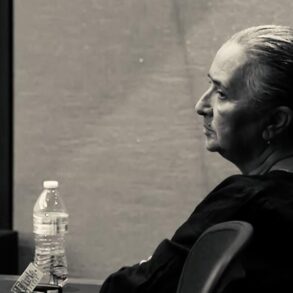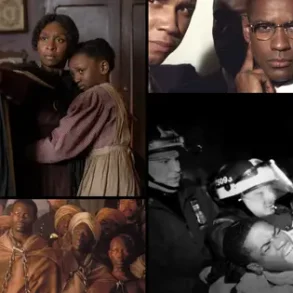
Pictured, from left, Mark Hedrick, principal of educational programs at Northern Correctional Center; Melissa Morrison, a regional transition agent with the state Jobs and Hope program; and Jason Wilburn, the CEO of Paul Wissmach Glass in Paden City, took part in a panel discussion on barriers to re-entry for those leaving jails and prisons during the Leadership West Virginia Wheeling session at Oglebay. The panel was moderated by Lorrie Smith, the State Workforce Resiliency Officer for Gov. Jim Justice. (Photo by Steven Allen Adams)
EDITOR’S NOTE: This is fifth in a seven-part series of columns about Leadership West Virginia, as well as the successes and challenges of West Virginia and different regions of the state.
***
WHEELING — Given that the first criminal laws were crafted in Wheeling and the infamous West Virginia State Penitentiary is just down the road, it makes sense for the September session of Leadership West Virginia to focus on the state’s criminal justice system.
The 2023 class of Leadership West Virginia gathered in Wheeling at Oglebay Thursday and Friday for a session focused on the state’s legal system and helping lift barriers for those leaving incarceration and returning to society.
LAW AND ORDER
West Virginia’s judicial system can be likened to a pyramid, with the state Supreme Court of Appeals, which also administers the entire judicial system, at the top. The next layer is the new Intermediate Court of Appeals which handles most of the appeals, leaving the most precedential cases for the Supreme Court to decide.
The next layer includes circuit courts and family courts. The circuit court system includes 75 judges in 31 judicial circuits hearing both criminal and civil cases, abuse and neglect cases, managing business and drug treatment courts, the mass litigation panel, appeals from magistrate courts and domestic violence appeals from family courts. The family court system includes 47 judges across 27 circuits, hearing family law matters and final hearings on domestic violence orders.
The final layer, and the layer where most people interact, is the magistrate court system of 160 magistrates with courts in all 55 counties. Magistrates handle misdemeanor cases, small claims, emergency domestic violence protective orders and warrants, initial appearances, bonds and felony preliminary hearings.
According to a history of the court system, the roots of the West Virginia legal system began in 1880, a period when the capital returned to Wheeling after moving from Wheeling to Charleston the first time after permanently returning to Charleston in 1885. The voters in 1880 approved an entire re-write by the West Virginia Legislature of the judicial system in the state Constitution.
The modern judicial system came to be in 1976, after voters approved the Judicial Reorganization Amendment, creating one single judicial system supervised by the Supreme Court. The separate family court system was created in 2000 and the Intermediate Court of Appeals was created in 2021.
“It established a system that was much closer to the U.S. system, the federal system,” said Joseph U. Leonoro, a 2021 graduate of Leadership West Virginia and an attorney for the Steptoe and Johnson law firm who presented an overview of the state and federal judicial system Thursday morning.
According to the most recent statistics from the Supreme Court, 11,330 criminal cases were heard in circuit courts in 2022, including 6,833 felony cases that made up more than 60% of cases heard. Magistrates heard 122,762 criminal cases in 2022, making up 72% of their docket.
The number of criminal cases filed in circuit and magistrate courts have mostly trended down, though circuit court misdemeanor cases have begun to come up since the COVID-19 pandemic, from 518 cases in 2020 to 692 cases in 2022.
Other than a dip in felony cases heard in 2020 during the pandemic, circuit courts have seen a steady drop in filed felony cases, from 7,718 cases in 2017 to 6,833 cases in 2020. Misdemeanor magistrate court cases have also decreased, from 134,716 cases in 2017 to 108,715 cases in 2022, but that’s an increase from 96,307 cases in 2020 (the first year of the pandemic) and 107,878 cases in 2021.
Leonoro said despite cases appear to be trending down, the explosion of abuse and neglect cases in West Virginia and the priority of the system on criminal matters has overwhelmed the courts, with civil cases often being dragged out for years as a result.
“The courts in West Virginia are very overburdened these days,” Leonoro said. “Criminal cases always trump civil cases in terms of priority because criminal defendants have a constitutional right to a speedy trial. With all of the abuse and neglect cases these days, our judges are simply overwhelmed. Keep that in mind. If you do have a (civil) case that gets sent to circuit court, don’t be surprised that the case may take years to play out.”
SECOND CHANCES
Despite the decreases in cases, West Virginia has one of the highest rates of incarceration in the nation across the state’s system of 11 prisons, 10 regional jails, 10 juvenile centers and three work-release sites managed by the Division of Corrections and Rehabilitation.
While recent focus has been on the state of emergency over the severe shortages of correctional officers and staff, overcrowding in jails and prisons is also getting attention, as well as a class-action federal lawsuit. According to DCR, the adult prison population grew from 4,106 in 2001 to 6,021 in 2021, though that is down from a peak of 7,095 in 2016.
According to the National Institute of Corrections, West Virginia’s incarceration rate was 340 per 100,000 people at a cost of more than $32,000 per inmate. According to a 2018 report from the Vera Institute of Justice, West Virginia had the fifth highest growth in prison population between 2007 and 2017.
The Legislature recently passed a package of bills meant to increase pay for correctional officers, change the pay scales in order to increase pay in salary tiers within ranks, provide one-time bonuses for corrections support staff, and give freedom to DCR officials to increase pay in regions where shortages in staff are highest. Officials hope these measures will help retain and recruit correctional officers.
But lawmakers and the courts are looking at other ways to reduce the pressure on the corrections system. Last week, the Legislative Oversight Committee on Regional Jail and Correctional Facility Authority heard testimony on reforming pre-trial release, the bail system, and conditions for release.
Lawmakers were told that more than 500 people are in the regional jail system who have yet to be convicted of misdemeanor offenses, with some of them able to be released if the bail system is reformed, including setting standards for the amounts of bail that can be levied by magistrates and how someone can pay, such as allowing for credit/debit options.
But another way to help alleviate overcrowding in the state’s jails and prisons is ensure that those coming out of the jails and prisons don’t return. According to the most recent data available from DCR, the three-year recidivism rate for inmates released from state custody was 29.5%, a more than 1% increase from 2015. Most of that increase came from former inmates committing new crimes, causing them to be locked up again.
State officials and businesses leaders believe that helping those get out of the correctional system and into jobs, plus educating companies and ending the stigma over hiring those convicted of crimes, can help reduce the number of people returning to jails and help the state’s economy. Leadership West Virginia heard a panel discussion Thursday afternoon on alleviating workforce barriers in West Virginia.
The West Virginia Schools of Diversion and Transition, a part of the state Department of Education, works with incarcerated juveniles and adults to help them get their high school equivalency or work towards a skill. Mark Hedrick, principal of educational programs at Northern Correctional Center, said lack of education is a huge barrier for those leaving state custody.
“When they come to us, some of them are immensely talented. They have a lot of interests, but they don’t have marketable skills from those talents and from those interests,” Hedrick said. “Our job is to prepare them, bring them into our programs, find out what their interests and talents are, and if they don’t have a high school equivalency, they go that direction. If they do, we get them involved in career and technical education programs, higher education, and whatever we can do to help them.”
Hedrick said his program offers everything, from carpentry, welding, automotive technology and collision repair, copper/fiber cable installation, cosmetology, culinary arts, agriculture, business education, and more. The program has career development specialists, and they also try to work with inmates 120 days away from release to help them develop plans once they are free. They also help them put together resumes and portfolios of work.
Melissa Morrison is one of 23 regional transition agents with the state Jobs and Hope program implemented under Gov. Jim Justice. The voluntary program has more than 1,700 participants, ranging from those in substance use disorder recovery to those re-entering society from jails and prisons. Jobs and Hope works to help participants recover, overcome barriers to employment, obtain high-demand skills, and find employment.
Morrison said one of the biggest barriers is obtaining drivers’ licenses. DCR has offered temporary photo identifications for those leaving incarceration, a program that was just codified and expanded by the Legislature during the August special session. But those re-entering the workforce often still have thousands of dollars in unpaid fines that prevent them from getting valid drivers’ license.
The Jobs and Hope Program works with the Division of Motor Vehicles to help those leaving incarceration get a drivers’ license while being put in a payment plan to pay off their motor vehicle fines. The drivers’ license program is two years, which also includes mandatory drug testing to ensure participants are complying with the program’s requirements.
“The DMV has been an invaluable partner in tackling this barrier. They have been willing to work, very flexible, and willing to listen to what we have to say and change their processes,” Morrison said. “When they get to the point where they are eligible for either a payment plan or the stay, they can go ahead and test, reobtain their drivers’ license, and pay on those (fines) as they go.”
Jason Wilburn is the CEO of Paul Wissmach Glass in Paden City, a manufacturer of stained sheet glass. Paul Wissmach Glass is a second-chance employer, and Wilburn estimates that half of his workforce are second-chance employees. Wilburn said the biggest barrier he sees for those wishing to re-enter the workforce after incarceration is housing.
Criminal history can be considered when applying for federal housing. Landlords often won’t rent to those released. Housing is also often too expensive. And if family members also suffer from substance abuse disorder or are felons, that also limits where those leaving prison can live.
“My number one issue is housing. If we can solve housing, I can work with everything else,” Wilburn said. “You can’t do anything if you don’t know where you’re going to sleep tonight or if you don’t know where you’re going to eat. Food you can get, but if you don’t know where you’re going to sleep tonight, I don’t understand how you’re going to make anything else work.”
According to the Leadership Conference on Civil and Human Rights, one in every five people who leave prison are likely to become homeless. Jobs and Hope’s transition agents partner with those in the communities they serve, including landlords, to help secure housing for those leaving jails and prisons.
In the end, the key for helping the re-entry community thrive and begin new, productive lives in society are employers willing to give this specific community a second chance that can change their lives for the better.
“We can do all the things. We can help them get a drivers’ license. We can help them get their high school equivalency. We can help them get a certificate. But if we don’t have employers, we’re dead in the water,” Morrison said. “We can only get them so far, but if they can’t get a job, how do they continue?”
Steven Allen Adams can be reached at sadams@newsandsentinel.com
This post was originally published on this site be sure to check out more of their content.







